Cotton is the most used characteristic portrayed fiber- making around 21% of all fiber used in clothing production. The elements that make cotton a trusted and sustainable fabric are
(1) Natural cotton creation requires less water
(2) It is far less dirtying compared to other materials
(3) Fights ecological change
For producing organic cotton, farmers take extra thought to make sure about the atmosphere, animals and people — moderate water, maintain biodiversity and sound soils, clear out hazardous toxic pesticides from water, soil and air in one go!
As indicated by ongoing measurements, cotton development additionally holds a regular 250 million positions, speaking to almost 7% of work in some low compensation countries.
There’s no surprise that due to the sustainable feature and high quality, cotton clothing is far way trending than the others. We cannot neglect the fact that cotton is more functional, lightweight, easy to carry and long-term fabric than synthetic, dyed ones.
The cotton texture also considers mainstream since it's anything but difficult to think about and agreeable all year.
- In blistering, moist climate, cotton "relaxes."
- As the body sweats, cotton strands assimilate the dampness and delivery it on the outside of the texture, so it dissipates.
Fashion industry’s contribution to waste production
It is notable that each clothing item affects and has a contribution to the climate. Anyway, a typical customer doesn't know which item has less or more effect than the other one. Any item that is manufactured, utilized, or discarded in a way that essentially lessens the mischief, it would add another reason to the climate which on the later stage could be considered as an eco-accommodating item. Gradually, buyers in India are taking the lead in inciting makers to embrace clean innovations to deliver eco-accommodating items.
The material business is shared between standard filaments, for example, fleece, silk, linen, cotton and hemp, and human-made ones, the most widely recognized of which are manufactured fibers (polyamide and acrylic) produced using petrochemicals.
The majority of the garments in our closets contain polyester, elastane, or Lycra. These modest and simple consideration filaments are turning into the material business' marvel arrangement. In any case, their production makes contamination, and they are difficult to reuse (with nylon taking 30 to 40 years to decompose).
The raw material and attire industry is an assorted one, as much in the crude materials it utilizes as the strategies it plans. At every one of the six phases usually needed to make a piece of clothing, the adverse effects on the climate are as varied as they are different.
- Turning, weaving, and modern production sabotage air quality.
- Coloring and printing devour immense measures of water and synthetic compounds, and deliver various unpredictable specialists into the environment that are incredibly unsafe to our wellbeing.
Cotton Material Collected in the Form of Waste for Recycling in 2019

(Source: Statista)
The universe of design might be jazzy, alluring, and energizing; however, its effect on the climate is declining step by step.
Our Initiative- A step towards Zero Wastage
We at Crow, believe in sustainable production and working towards the betterment of the environment. Here, at Crow, we produce clothing using natural cotton fabric that causes no harm to the environment and aims for harmless smiles on our customer's faces.
Additionally, we have been taking various measures to ensure that we recycle the waste produced by the manufacturing of clothes.
Here’s a list of various creative ways we repurpose and recycle the cotton clothing wastes.
Dairy Covers and bags
The leftover materials from the clothing is used to make the covers for Dairy and different decorative materials for the production of a dairy.
Buttons
The pieces of the clothes which are left from the main piece cut-out are divided into equal bands and reused to make buttons for the clothes. These buttons are sustainable and are customizable as per the cloth pieces.
Masks
As masks are an essential part of our lives, for the time being, we use the extra cloth to stitch in masks. You can find recently designed outfits along with masks of the same fabric as that of the dress.
Branding tags
The tags we use for branding purposes are made by waste fabrics. We strongly believe in making branding while keeping it harmless to the environment.
Sustainable packaging
Packaging of any items are usually done by decorating it through the party poppers or wrapping it in a plastic wrap. Instead of using synthetic packaging materials, we make bags and decorative cut-outs from the waste fabric and repurpose it.
Pillow fillers
Usually, in small towns, people make their own mattresses and pillows at home. It requires old clothes or cut-outs of fabrics. The small fabrics that can't be used are usually distributed amongst our workers or local people around the factory so that they can reuse this fabric to stuff their pillows.
Scrunchy
The pieces of the clothes which are left from the main piece cut-out are divided into equal bands and reused as scrunchies.
With the help of this initiative, we at Crow, are trying to adapt and reinvent ways to reduce the amount of waste produced by the production of clothes.
Let’s give nature back what it deserves. You can do your bit too by reusing and repurposing old clothes, spoiled and torn fabrics.
What’s your step to reduce wastage?
Think wise and act wisely!

